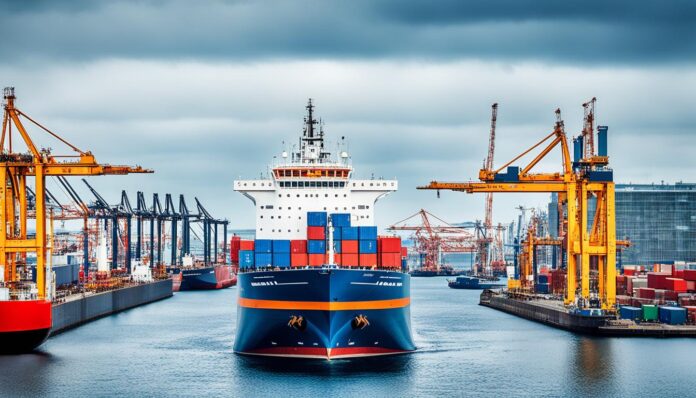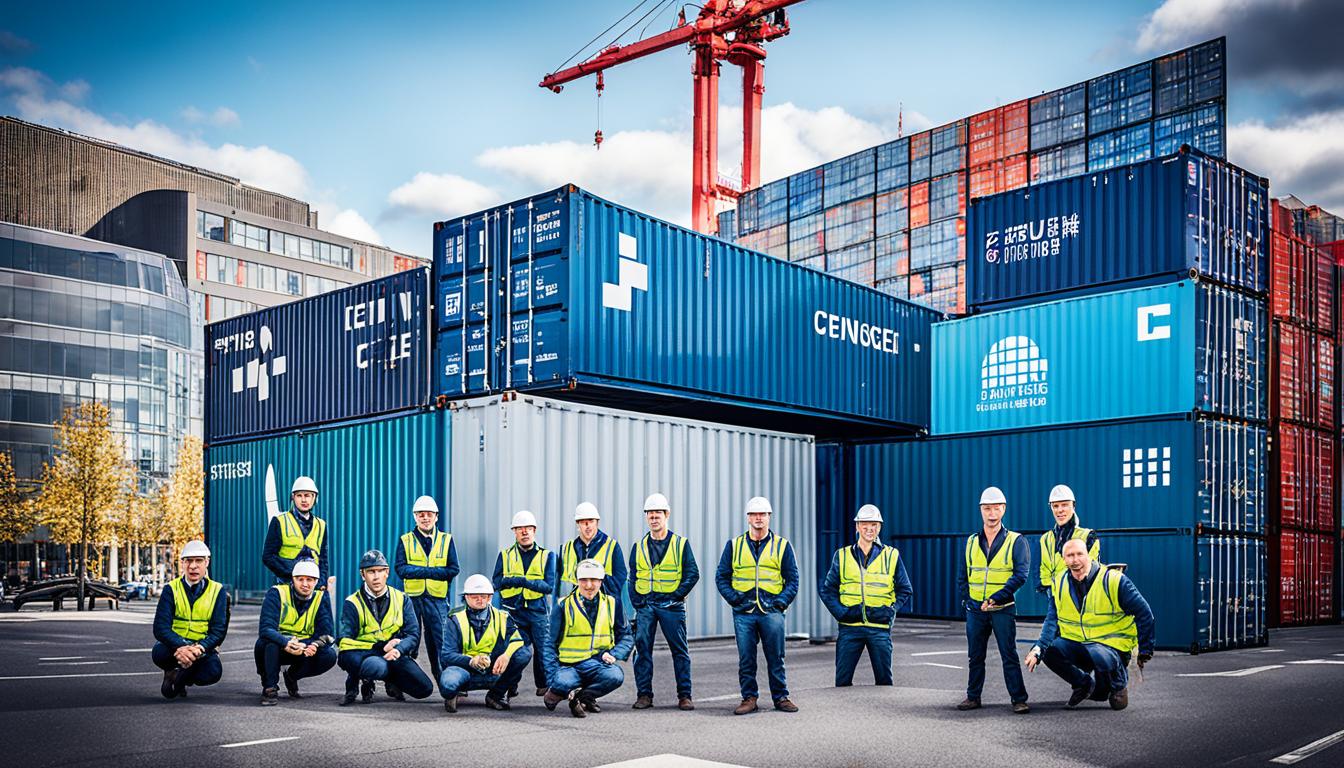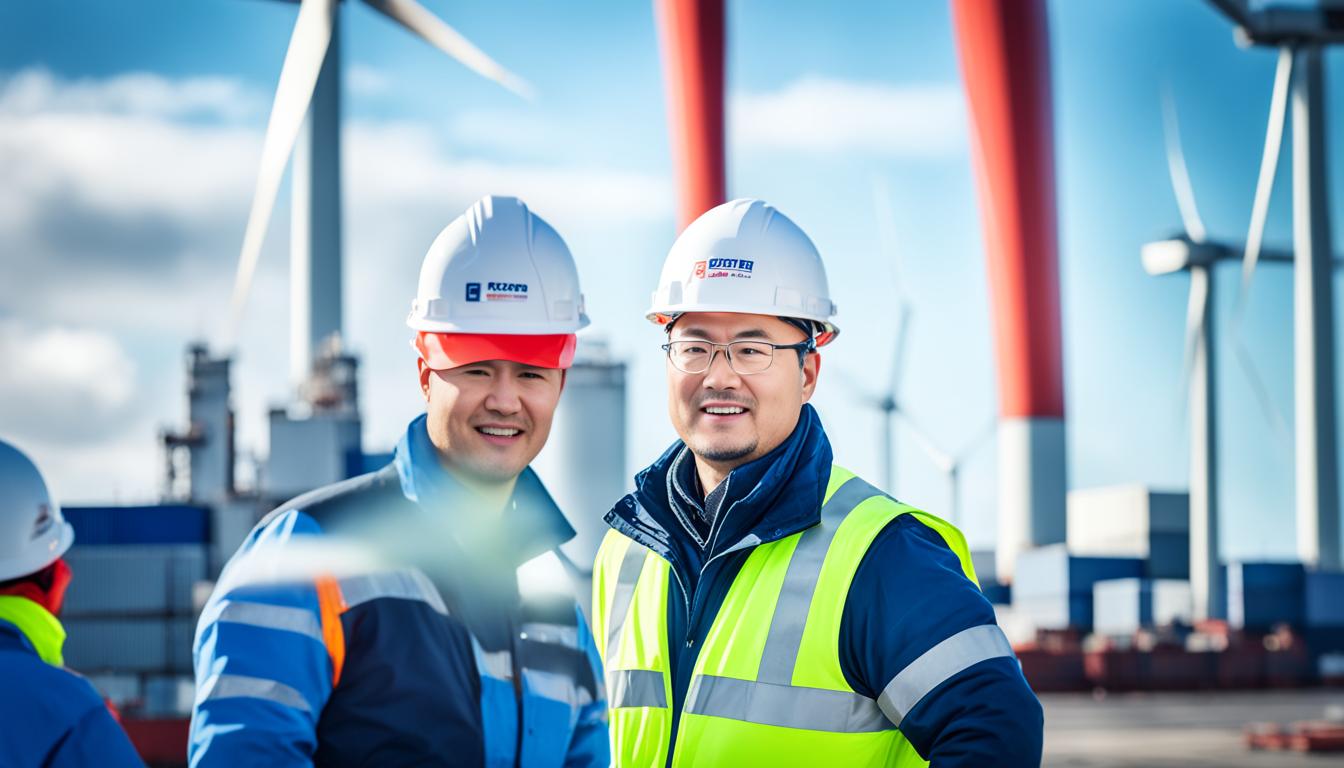
In the heart of Denmark, an amazing change is happening. Copenhagen, the dynamic capital, now acts as a center where Chinese workers push forward. They do this in major sectors like shipping, renewable energy, and tech. The city’s important maritime position has attracted more and more Chinese workers. This has helped Copenhagen’s shipping and logistic industry to bloom.
But, Copenhagen’s appeal doesn’t end with shipping. It’s also leading in using renewable energy, like wind power and biofuels. This focus has pulled in Chinese talents and investment. It has made the city a role model for sustainable energy. Also, Copenhagen’s start-up area and tech scene have really made use of Chinese workers. They add to the innovation and cultural mix of the city.
What makes Copenhagen so attractive to Chinese workers? How are they changing the city’s path? Let’s dive into these intriguing cross-cultural stories.
Key Takeaways
- Copenhagen has emerged as a hub for Chinese workers in the shipping, renewable energy, and technology sectors.
- Chinese talent and investment have contributed to the city’s thriving maritime industry and its position as a leader in sustainable energy.
- The influx of Chinese workers has fueled innovation and cultural exchange in Copenhagen’s vibrant startup ecosystem and tech industry.
- Copenhagen’s strategic location and world-class port facilities have attracted a growing Chinese workforce.
- Denmark’s pioneering efforts in renewable energy have drawn significant interest and involvement from Chinese companies and professionals.
Copenhagen’s Role in Global Shipping and Maritime Trade
Copenhagen is strategically placed on the Øresund Strait. This strait is critical, linking the North Sea and the Baltic Sea. Thanks to this, the city is a key player in the world’s maritime trade. Its port facilities like Nordhavn and Ydrehavn are among the best. They help with lots of cargo and container traffic. This means Copenhagen is very important in the global logistics scene.
Chinese Workers Contribute to Copenhagen’s Shipping Industry
Chinese workers play a big role in making Copenhagen’s shipping industry better. They are skilled in port operations, logistics, and supply chain management. Their knowledge helps move goods more efficiently. This makes Copenhagen more competitive globally as an international trade center.
This working together has also brought cultural exchanges and economic cooperation between Denmark and China.
Renewable Energy: Denmark’s Pioneering Efforts
Denmark stands out worldwide for moving towards renewable energy. Leading this charge is its capital, Copenhagen. The city is pushing hard to cut carbon emissions and use more renewable energy. They aim to set an example for the world in sustainable growth.
Denmark’s Transition to Renewable Energy Sources
Denmark is focusing greatly on wind power in its green shift. It has built big wind farms in the seas. This has been key in using less fossil fuel and in being greener.
Besides wind, Denmark also uses biomass and biofuels. Its strong farming sector supports making these eco-friendly energy sources. This way, Denmark boosts its renewable energy mix.
Copenhagen’s Renewable Energy Projects and Initiatives
Copenhagen is leading Denmark in going green. It has introduced many new energy projects. These have drawn interest from China.
Copenhagen’s efforts include new wind farms and green buildings. It’s serious about eco-friendly travel too. This work makes the city a global example for cutting carbon use. Plus, it’s drawing in more green energy business and know-how.
| Renewable Energy Source | Denmark’s Installed Capacity (2020) | Copenhagen’s Contribution |
|---|---|---|
| Wind Power | 6.1 GW | Multiple offshore wind farms, including the Kriegers Flak and Horns Rev projects |
| Biomass | 2.3 GW | Utilization of agricultural waste and byproducts for bioenergy production |
| Biofuels | 1.1 GW | Development of advanced biofuel production facilities and blending programs |
Copenhagen Connection: Chinese Workers Energize Shipping
Chinese workers have boosted the maritime industry in Copenhagen. They bring a lot of knowledge in port operations, logistics, and supply chain management. This helps improve cargo transportation and makes Copenhagen’s ports more efficient.
Chinese Workforce in Copenhagen’s Maritime Sector
This mix of Chinese workforce has encouraged cultural exchange and cooperation between Denmark and China. They use their unique skills to create new ideas and grow their business partnerships. This makes Copenhagen a key player in global maritime activities.
Cultural Exchange and Economic Collaboration
Having Chinese workers in Copenhagen has made the city more diverse and open to new ideas. Different cultures share their traditions and ways of thinking. This has increased understanding and sparked joint projects that benefit both nations.
Technology and Innovation in Copenhagen
Copenhagen is not only known for its shipping and green energy. It’s also a key spot for technology and innovation. The city thrives with start-up activity and a buzzing tech industry. Many Chinese talent have joined, helping create new and exciting solutions.
Copenhagen’s Start-Up and Tech Ecosystem
The city is praised for being a top tech ecosystem. It supports new ventures and innovative businesses well. A strong startup community leads the way in new tech, like AI and green technologies. This scene has caught the eye of Chinese professionals and business owners. They easily became part of the workforce, boosting the city’s partnership with China.
Chinese Talent Fueling Copenhagen’s Tech Industry
Chinese talent plays a vital role in Copenhagen’s tech scene. They bring experience and new ideas, especially in AI, digital transformation, and green tech. Their work keeps Copenhagen ahead as an innovation center. They’ve not only strengthened the tech scene but also enhanced cultural ties. This has led to new chances for progress.

Denmark’s Sustainable Energy Transition
Denmark’s journey into sustainable energy has been a big part of its change economically and environmentally. Copenhagen leads this change. The country has put a lot into wind power. It has built big offshore wind farms in the North and Baltic Seas.
Wind Energy and Offshore Wind Farms
Denmark has cut its carbon footprint with these wind energy efforts. It has also drawn interest from China. By focusing on wind power, Denmark is now a top player in the renewable energy scene.
Biomass and Biofuel Production
Besides wind energy, Denmark also uses biomass and biofuels. It uses its farming resources well to add to its energy sources. With this mix of energy sources, Denmark and especially Copenhagen are leading in the green economy.
Integration and Cross-Cultural Collaboration
More Chinese workers moving to Copenhagen have boosted its economy. They’ve brought a cultural exchange that increased diversity in jobs. Danish and Chinese workers have teamed up, sharing their skills and learning from each other. This teamwork has created new, smart solutions, benefiting both countries.
Workforce Integration and Diversity
The Chinese workforce has added to Copenhagen’s cultural mix. This city now thrives on ideas and traditions from all over the world. Bringing in talents from abroad has also made the city known for cultures coming together.
Cultural Exchange and Understanding
In Copenhagen, Danish and Chinese workers have come to really understand each other. Their shared work has led to new ways of doing things, based on what they’ve learned from one another. This has made the bond between the two countries even stronger.

Copenhagen’s Green Initiatives and Urban Planning
Copenhagen is dedicated to being eco-friendly, not just in its energy use but also in the way its buildings and roads are planned. It focuses on making its city sustainable by using clean energy, designing eco-friendly buildings, and adding more green areas. These include urban forests and parks.
The city is also all in when it comes to making moving around more earth-friendly. There are lots of bikes to share, more places to charge electric cars, and a big push for using buses and trains. This doesn’t only make Copenhagen cleaner; it makes life better for everyone there and those who visit. It’s like a how-to guide for other cities wanting to be greener.
Sustainable Urban Development
Copenhagen’s plan for a greener city is detailed. It centers on using more clean energy, building smarter buildings, and adding more green spots. Each step it takes makes the city a better place to live and sets a strong example for others to follow.
Green Transportation and Infrastructure
Getting around without polluting is a big deal in Copenhagen. They have put a lot into making it easy to share bikes and charge electric cars. This has led more people to choose these eco-friendly ways of travel. Plus, they really push for using buses and trains. This effort has lowered the need for cars, playing a significant role in keeping the city’s environment clean.
Conclusion
Copenhagen has grown a lot because of its close link with China. This connection has led to big changes in important fields like shipping, green energy, and tech. Chinese workers have been key, sharing their skills and ideas, building a strong bridge between Denmark and China.
The city is now a top player in green city planning and clean transport. Mixing Danish and Chinese know-how has powered these advances. It has not just helped Copenhagen’s job market but has also made the city a lively place that welcomes all backgrounds and cultures.
The mix of Copenhagen’s location, great facilities, and its eager approach has drawn in Chinese talent and businesses. This teamwork is vital for the city’s future. Now, as a role model for eco-friendly city growth, Copenhagen and China’s joint efforts will keep steering them towards success.
